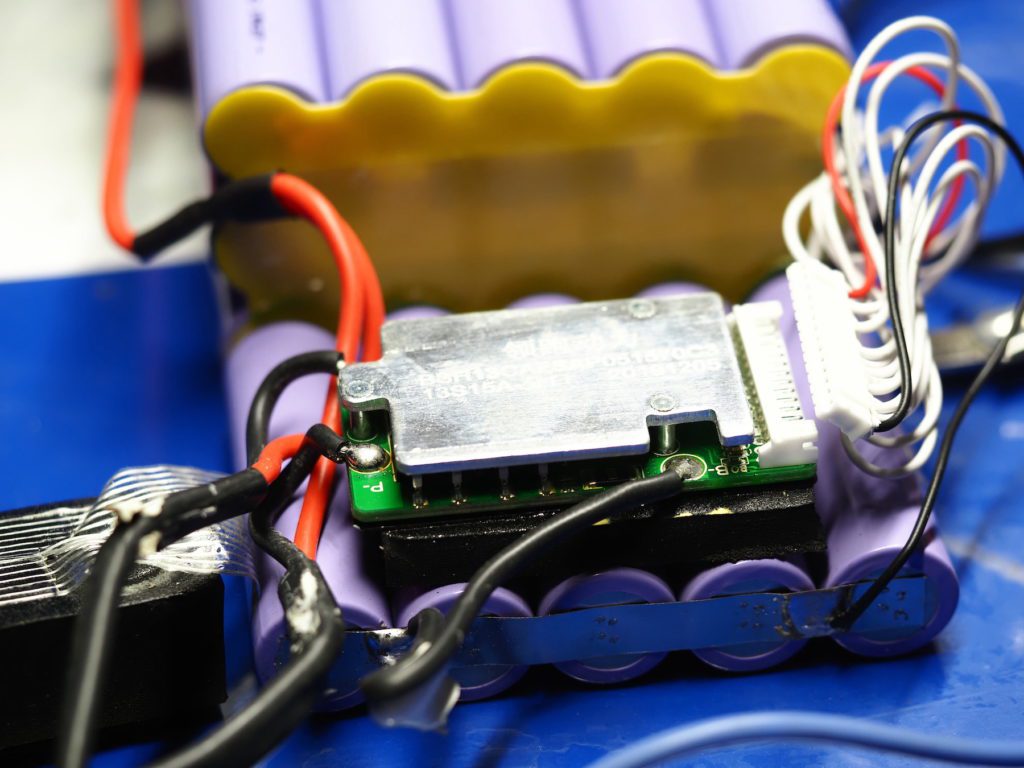As gas prices have risen, people are increasingly turning to micromobility modes, like electric bikes and standup scooters, as transportation alternatives. With higher numbers of these personal light electric vehicles (PLEVs or PEVs) out there, it is as important as ever to consider the safety of what powers them—lithium batteries.
Lithium batteries can be quite safe within a well-designed system and have some key advantages over older battery technology. They have higher energy density to provide more range with less weight, and their lack of “memory” makes them easier to maintain and gives them a longer lifespan. However, lithium batteries are not without their drawbacks: they are highly flammable and require a dedicated protective circuit, commonly known as a battery management system (BMS), to keep them safe. Although lithium battery fires are relatively uncommon, they are very difficult to extinguish, release toxic fumes, and can reignite if the cells have not fully burned.
Explosive growth
Given continued and increasing demand, many manufacturers wanting a piece of the more than US$40 billion micromobility market are rushing products off the line with poor designs and insufficient safety testing. Cutting costs on the most expensive parts on the bill of materials may lure customers in through the resulting lower retail prices, but these cost savings, along with the lack of industry-wide adoption of safety standards, are ultimately to the detriment of the consumer—and manufacturers.
Companies in the ebike industry like Bosch, Mahle, and Shimano, electric scooter manufacturers like Segway Ninebot, and novel self-balancing vehicle makers like Future Motion all make a tremendous effort to design and build safe systems, but in a market flooded with increasing sales of low-cost alternatives, we are bound to see an increase in dangerous lithium battery fires.

Managing the problem
The number-one cause of lithium battery fires is failure of low-quality cells. Imperfections and impurities inside the cells make them significantly more prone to catastrophic failure. Going cheap on the cells can save a lot of money on the bill of materials, but the significant safety risk should make them impossible to justify. The first step toward better and safer lithium batteries is for companies to avoid using these poor-quality cells and ensure higher manufacturing standards are followed.
However, cell quality is only part of the equation. The BMS is responsible for keeping even good-quality cells safe, as well as maximizing the usable capacity of the battery pack and increasing the battery’s lifespan. A well-designed BMS monitors the cells within a battery and offers various important protections, such as under/over voltage and current protections and, importantly, temperature monitoring to prevent overheating, which can lead to fire. In addition, BMS maximizes the usable capacity of the battery by “balancing” the cell voltages. The high-power nature of PLEVs makes the thermal management of the battery very important, and yet many batteries do not include any temperature sensing at all. By forgoing the temperature-sensing protections afforded by BMS, e-bike and scooter manufacturers are subjecting themselves to the liability and reputational damage created whenever a micromobility vehicle fire occurs.
More sophisticated BMS designs can even assess battery health by doing things like tracking the number of charge cycles and monitoring the usable charge capacity as the battery ages. Another key feature commonly missing from lower-end batteries is the ability to communicate battery status and health with the rest of the system. Not only is this helpful for informing users whether their PLEV is currently safe to use, but it can also aid in diagnosis when problems do arise. The ability to communicate battery-related warnings is especially prudent in self-balancing vehicles, where simply shutting down the battery system can actually endanger the user even more.
For any maker looking to succeed in the micromobility industry, PLEVs need to be designed and built with system-level safety in mind.
Wider adherence to thorough and holistic safety standards such as these is the next step towards a safer PLEV landscape. Singapore has adopted UL2272 as a requirement for all personal electric mobility devices sold and operated. This is excellent for consumer safety within that country, but with Singapore’s small portion of the global micromobility market (less than 0.039% of the global market), it does little to encourage a shift in the industry as a whole. Safety standards are only as effective as how and where they’re enforced.
A system-level approach
Forward-thinking manufacturers will pursue certification that reflects their adherence to safety standards as a way to stand out from an increasingly crowded marketplace. By partnering with a product developer with expertise in the safety certification process, manufacturers can offload the time and effort of this critical but layered manufacturing stage.
At Synapse, we not only have the deep experience in safety certification that allows us to guide clients through that process, but we also incorporate the type of system-level approach needed to effectively manage battery health in e-bikes and scooters. We have designed, built, and tested user-actuated motorized systems that output upwards of 3000W of peak power. In order to achieve UL-listing on this kind of system, safety-centric design practices are crucial to ensure that failures during the device’s operation and lifetime are carefully managed. One technique we often employ to mitigate dangerous failures is to perform a Failure Modes & Effects Analysis (FMEA). By identifying potential failure modes and assigning scores based on their risk, likelihood, and ease of detection, our engineering team can then design mitigations to safeguard against the list of brainstormed failures. Given the complex electro-mechanical nature of these products, mitigations can take the form of mechanical, electrical, or software changes, and quite frequently involve multiple disciplines. By running an FMEA in the architecture and design phase, we can build protections into the product earlier on in the development cycle, which reduces redesign efforts while ensuring user safety.
Advancing battery safety will not only benefit the consumers who are increasingly making micromobility part of their lifestyles but will also create more robust opportunities for responsible and respected PLEV manufacturers.
